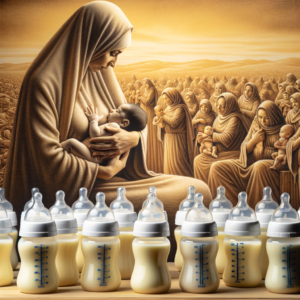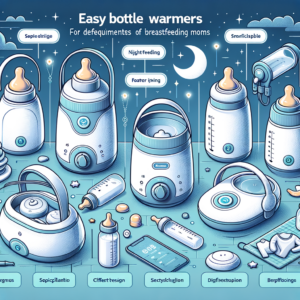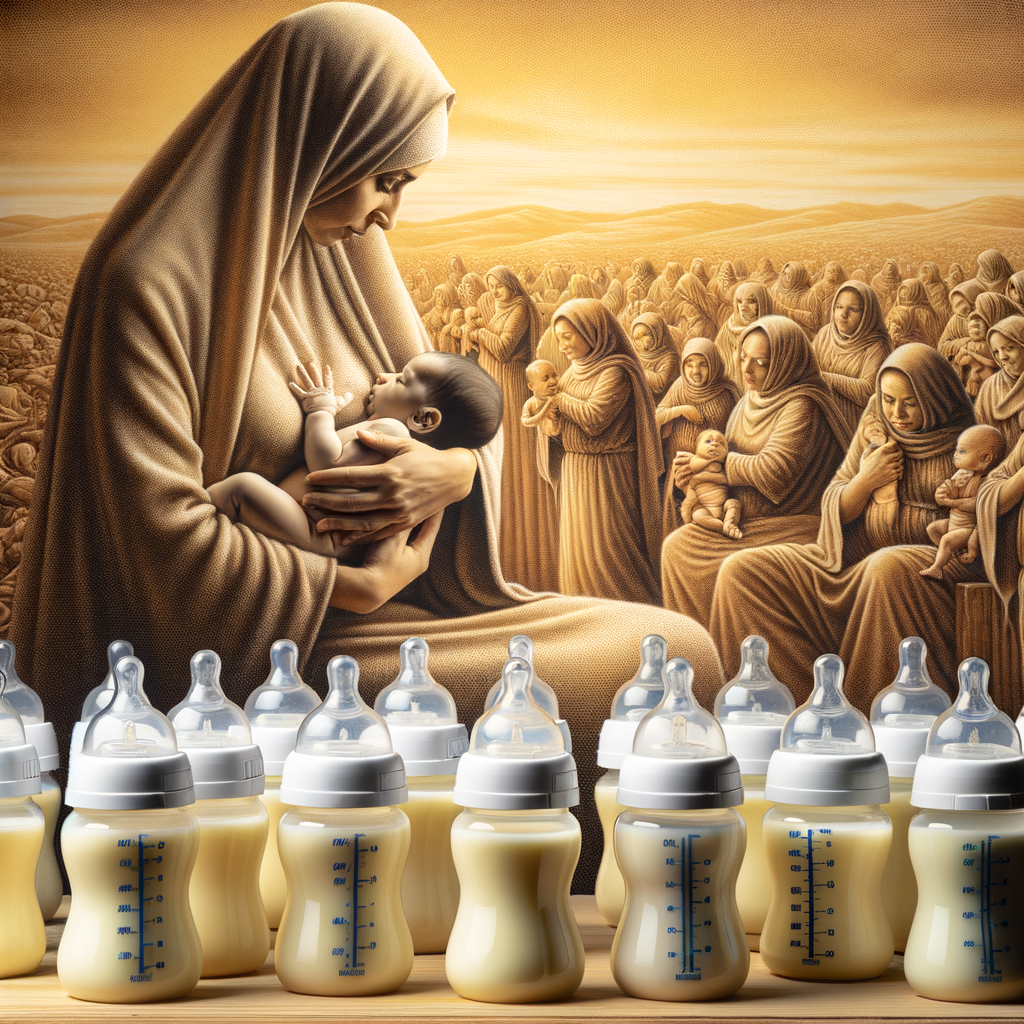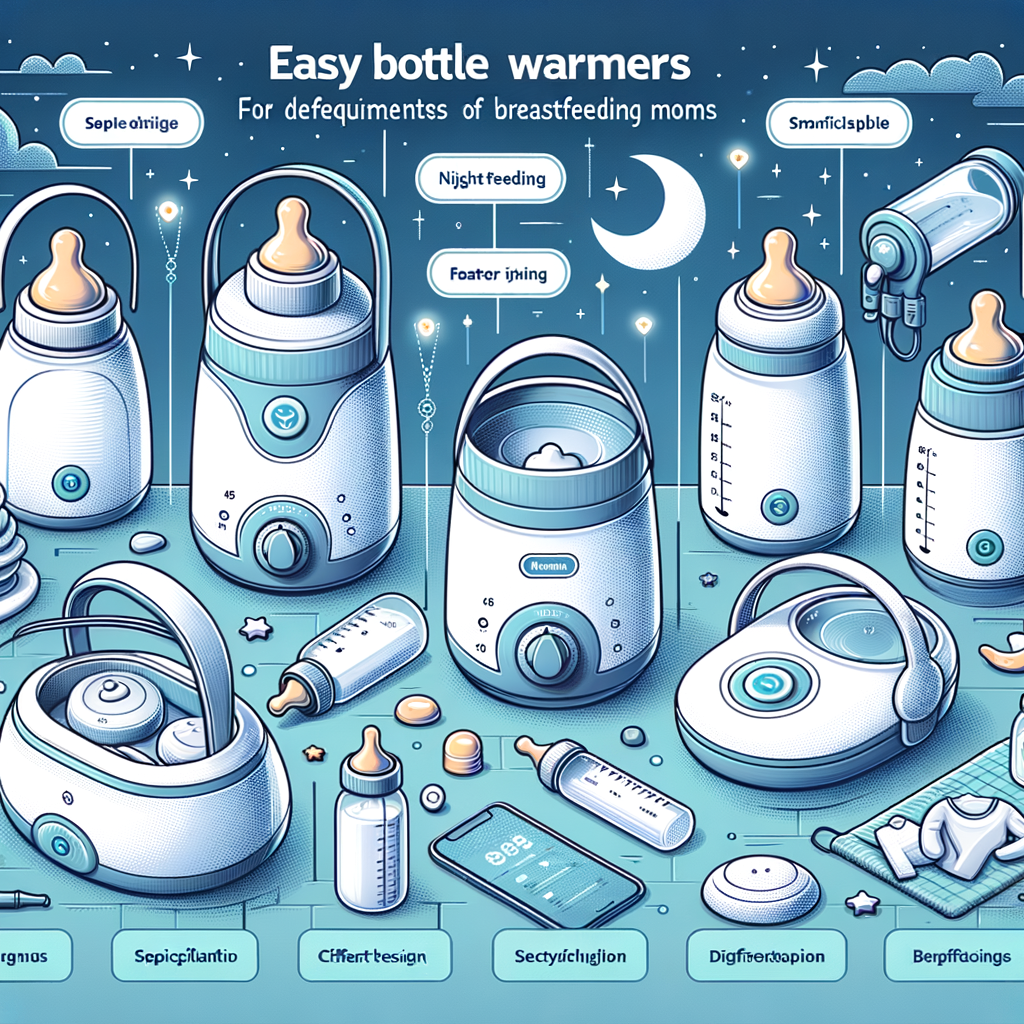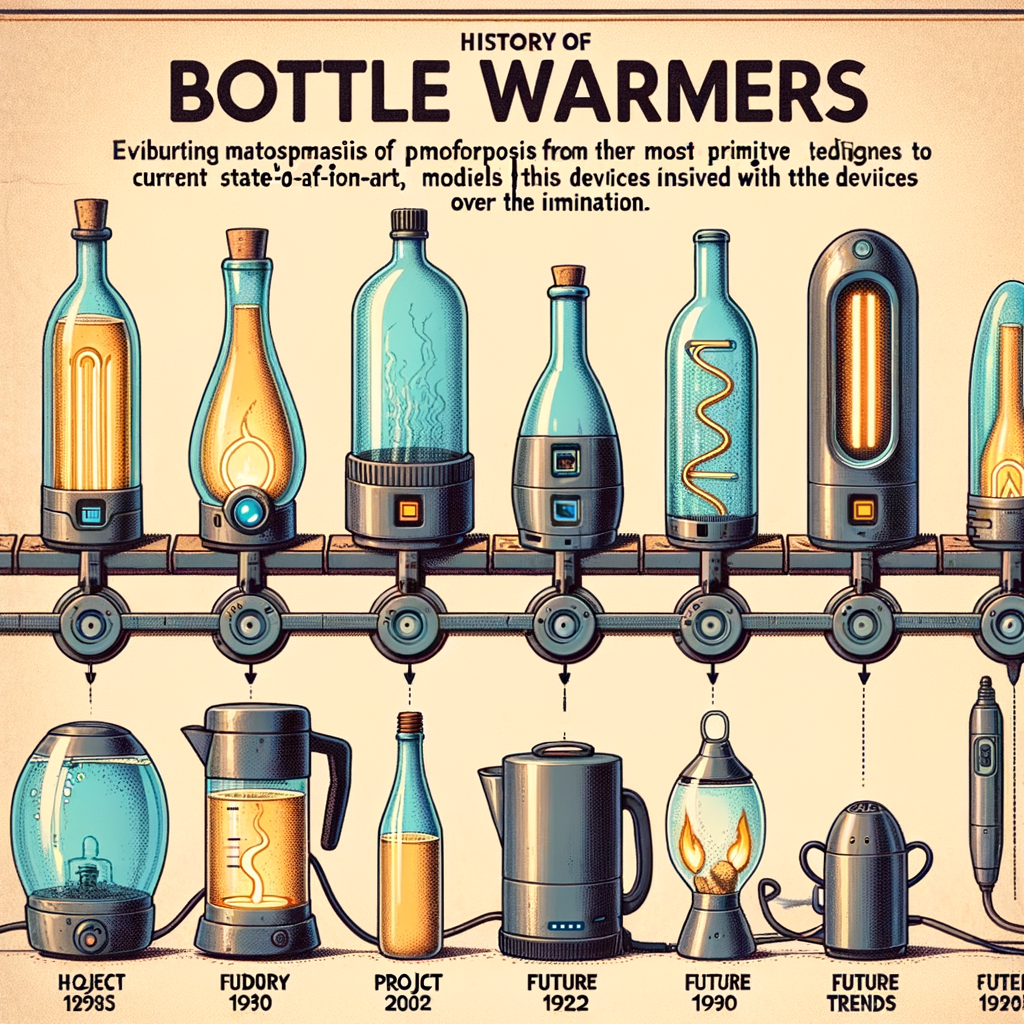
Introduction to Breastfeeding Education
Breastfeeding is a natural and beneficial process for both mothers and babies. However, it’s not always as straightforward as it seems. That’s where breastfeeding education comes in. It equips expectant and new mothers with the knowledge and skills they need to breastfeed successfully. In this section, we will discuss the importance of breastfeeding education and its current state.
- The Importance of Breastfeeding Education
- Current State of Breastfeeding Education for Expectant and New Mothers
Breastfeeding education is crucial for several reasons. Firstly, it helps mothers understand the benefits of breastfeeding, not just for the baby but for themselves as well. For instance, breastfeeding can help a baby fight off viruses and bacteria, and it can reduce a mother’s risk of certain health problems, such as breast and ovarian cancer.
Secondly, breastfeeding education can help mothers overcome common breastfeeding challenges, like latching difficulties and low milk supply. It can also teach them how to maintain a healthy diet during the breastfeeding period, which can enhance the quality of their breast milk.
Lastly, breastfeeding education can promote a positive breastfeeding experience. It can provide mothers with the confidence and support they need to continue breastfeeding, even when it gets tough.
Despite its importance, breastfeeding education is not as widespread or accessible as it should be. Many expectant and new mothers do not receive adequate breastfeeding education, which can lead to low breastfeeding rates and early breastfeeding cessation.
According to a recent survey, only about half of the expectant mothers received breastfeeding education during their prenatal visits. Furthermore, many of those who did receive education reported that it was insufficient or ineffective.
The lack of effective breastfeeding education is a significant concern. It means that many mothers are not fully prepared for the challenges of breastfeeding, which can lead to unnecessary stress and frustration. It’s clear that there is a need for more comprehensive and accessible breastfeeding education for expectant and new mothers.
Improving Breastfeeding Education
One of the key areas we can enhance in the realm of breastfeeding education is the support and guidance provided to expectant mothers. This is a crucial time when mothers are eager to learn and prepare for the arrival of their newborns. Let’s delve into how we can improve this aspect.
For Expectant Mothers
Expectant mothers are in a unique position to absorb and apply breastfeeding education. Here are some strategies that can be employed to enhance their learning experience:
- Integrating prenatal breastfeeding education into routine prenatal care
- Providing comprehensive breastfeeding education resources
- Case study: Successful prenatal breastfeeding education programs
One effective approach is to incorporate breastfeeding education into routine prenatal care. This can be done during regular check-ups, where healthcare providers can discuss the benefits of breastfeeding, techniques, and address any concerns or misconceptions. This integration ensures that every expectant mother receives consistent and accurate information, setting a strong foundation for successful breastfeeding.
Another strategy is to provide expectant mothers with comprehensive resources. This can include brochures, online materials, and even interactive workshops. These resources should cover a wide range of topics, from the basics of breastfeeding to dealing with common challenges. Providing a variety of resources caters to different learning styles and allows mothers to access information at their own pace.
Let’s take a look at a case study that exemplifies successful prenatal breastfeeding education. In a program implemented in Sweden, expectant mothers were provided with extensive breastfeeding education during their prenatal visits. This included one-on-one counseling, group classes, and a variety of educational materials. The result? A significant increase in breastfeeding rates among participants, demonstrating the effectiveness of comprehensive prenatal breastfeeding education.
In conclusion, improving breastfeeding education for expectant mothers is a multi-faceted process. It involves integrating education into routine care, providing comprehensive resources, and learning from successful programs. By focusing on these areas, we can better prepare mothers for the breastfeeding journey ahead.
For New Mothers
-
Postnatal Breastfeeding Education: What It Should Include
After giving birth, a new mother’s journey with breastfeeding begins. Postnatal breastfeeding education is crucial to ensure a smooth transition. This education should include:
- Techniques: How to hold the baby, how to latch, and various breastfeeding positions.
- Understanding Baby’s Signals: Recognizing when the baby is hungry and when they are full.
- Health Benefits: The nutritional value of breast milk and its benefits for the baby’s health.
- Problem-solving: How to handle common breastfeeding issues like sore nipples, low milk supply, and mastitis.
-
Role of Healthcare Providers in Providing Breastfeeding Support
Healthcare providers play a significant role in supporting new mothers with breastfeeding. They are often the first point of contact for mothers facing challenges. Here’s how they can help:
- Education: They provide necessary information and practical tips about breastfeeding.
- Support: They offer emotional support and encouragement, which is crucial for new mothers.
- Referrals: They can refer mothers to lactation consultants or support groups for additional help.
-
Case Study: Effective Postnatal Breastfeeding Education Programs
A study conducted by the World Health Organization (WHO) showed that breastfeeding education programs significantly improved breastfeeding rates. The program included practical demonstrations, one-on-one counseling, and continuous support. As a result, mothers felt more confident and were more likely to continue breastfeeding.
Before Program After Program 50% of mothers breastfeeding 80% of mothers breastfeeding This case study highlights the importance of comprehensive postnatal breastfeeding education and the role of healthcare providers in supporting new mothers.
Breastfeeding Advice for New Moms
As a new mom, breastfeeding can seem like a daunting task. However, with the right information and support, it can become a rewarding experience for both you and your baby. Here are some key pieces of advice to help you navigate this journey.
- Common breastfeeding challenges and how to overcome them
- Latching difficulties: If your baby is having trouble latching, try different breastfeeding positions until you find one that works. You could also consult a lactation consultant for professional advice.
- Sore nipples: To prevent sore nipples, ensure your baby is latching on correctly. Applying a lanolin cream can also provide relief.
- Low milk supply: Frequent breastfeeding can help stimulate milk production. Additionally, staying hydrated and eating a balanced diet can boost your milk supply.
- Importance of a support network
- Key takeaways for successful breastfeeding
- Patience is key: Breastfeeding is a skill that both you and your baby are learning. It may take time, but with patience and practice, it will get easier.
- Listen to your body: If you’re in pain or feeling stressed, it’s important to address these issues. Your well-being is crucial for successful breastfeeding.
- Seek help when needed: Don’t hesitate to seek help if you’re struggling with breastfeeding. There are numerous resources available, including lactation consultants and breastfeeding support groups.
Every new mom faces a unique set of challenges when it comes to breastfeeding. Some common ones include latching difficulties, sore nipples, and low milk supply. Here are some tips to overcome these:
Having a support network can make a significant difference in your breastfeeding journey. This could be your partner, family, friends, or a breastfeeding support group. They can provide emotional support, share their experiences, and even help with practical tasks to ease your transition into motherhood.
Here are some key takeaways for successful breastfeeding:
In conclusion, breastfeeding is a journey that comes with its own set of challenges. However, with the right information, support, and a bit of patience, it can become a rewarding experience. Remember, every mom’s breastfeeding journey is unique, and what works for one may not work for another. So, take the time to find what works best for you and your baby.
Role of Technology in Breastfeeding Education
In the modern world, technology plays a crucial role in almost every aspect of our lives, and breastfeeding education is no exception. The use of technology in this field has made it easier for new mothers to access vital information and support. Let’s explore how technology contributes to breastfeeding education.
- Online resources for breastfeeding education
Online resources have become a go-to source for breastfeeding education. They offer a wealth of information that is easily accessible and often free. These resources include websites, blogs, and online forums where mothers can learn about the benefits of breastfeeding, proper techniques, and how to overcome common challenges.
For instance, many health organizations provide comprehensive guides on breastfeeding. These guides cover a wide range of topics, from the basics of breastfeeding to dealing with specific issues like low milk supply or latching difficulties. They also offer tips and advice to make the breastfeeding journey easier and more enjoyable for both mother and baby.
- Apps and digital tools for breastfeeding support
Alongside online resources, there are numerous apps and digital tools designed to support breastfeeding mothers. These tools offer a variety of features, such as tracking feeding times, monitoring baby’s growth, and providing reminders for the next feeding.
Some apps even offer personalized advice based on the information you input. For example, if you’re struggling with low milk supply, the app might suggest specific foods to eat or exercises to try. This personalized advice can be incredibly helpful, especially for new mothers who are still learning the ropes.
Moreover, many of these apps also have a community feature, where mothers can connect with each other, share experiences, and offer support. This sense of community can be a great source of comfort and encouragement, especially during those tough early days of breastfeeding.
In conclusion, technology plays a vital role in breastfeeding education. It provides easy access to information, personalized advice, and a supportive community, all of which can make the breastfeeding journey a little bit easier.
Conclusion: The Future of Breastfeeding Education
As we conclude, it’s important to look ahead and consider the future of breastfeeding education. The advancements in this field will not only benefit individual mothers and babies, but society as a whole. Let’s explore how this can happen and what trends we can anticipate in the coming years.
- How improving breastfeeding education can benefit society
- Future trends in breastfeeding education
Improving breastfeeding education has the potential to bring about significant societal benefits. For one, it can lead to healthier children. According to the American Academy of Pediatrics, breastfeeding can protect babies from a host of diseases and conditions, including ear infections, respiratory illnesses, and obesity. This, in turn, can reduce healthcare costs and the burden on our healthcare system.
Moreover, breastfeeding can foster stronger bonds between mothers and their babies, contributing to healthier emotional development. This can lead to a more emotionally stable and productive society in the long run. Lastly, promoting breastfeeding can help in environmental conservation as it reduces the need for formula production, packaging, and disposal.
Looking ahead, we can anticipate several trends in breastfeeding education. The use of technology is expected to increase, with more online classes, apps, and virtual support groups becoming available. This will make breastfeeding education more accessible to mothers everywhere, regardless of their location or schedule.
Furthermore, there will likely be a greater emphasis on personalized education. This means that breastfeeding education will be tailored to each mother’s unique needs and circumstances, rather than a one-size-fits-all approach. This can lead to more effective education and better breastfeeding outcomes.
In conclusion, the future of breastfeeding education is promising. With continued improvements and advancements, we can expect healthier babies, happier mothers, and a stronger society. As we move forward, let’s continue to support and advocate for quality breastfeeding education for all mothers.


